Common chord progression are simply the sequence of chords that contiounly show up in various styles of music and common keys.
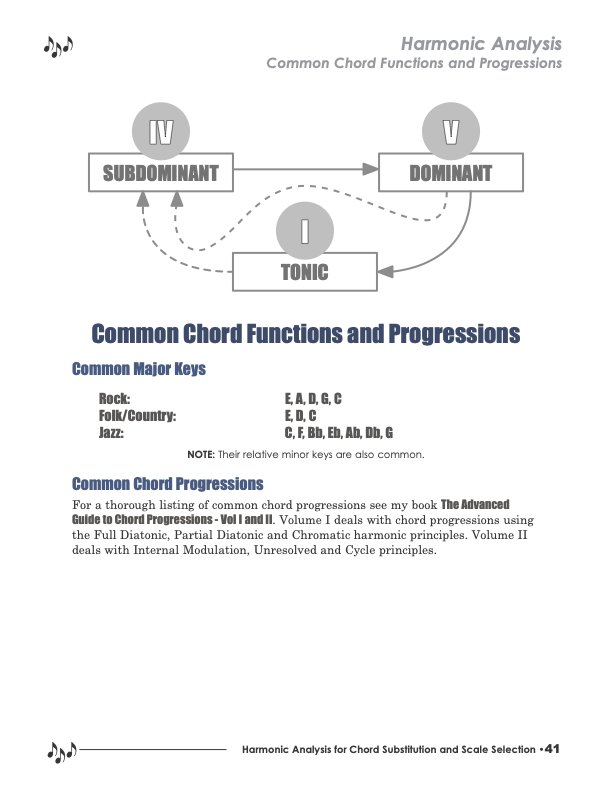
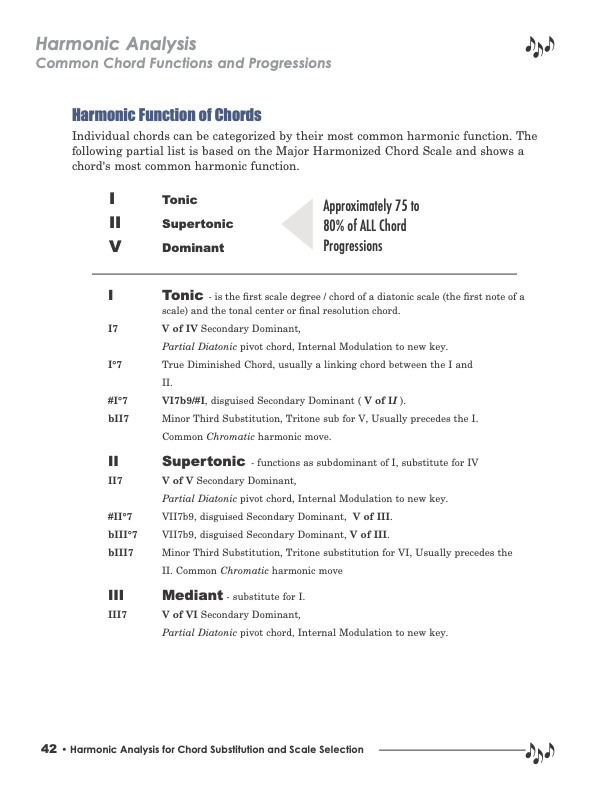
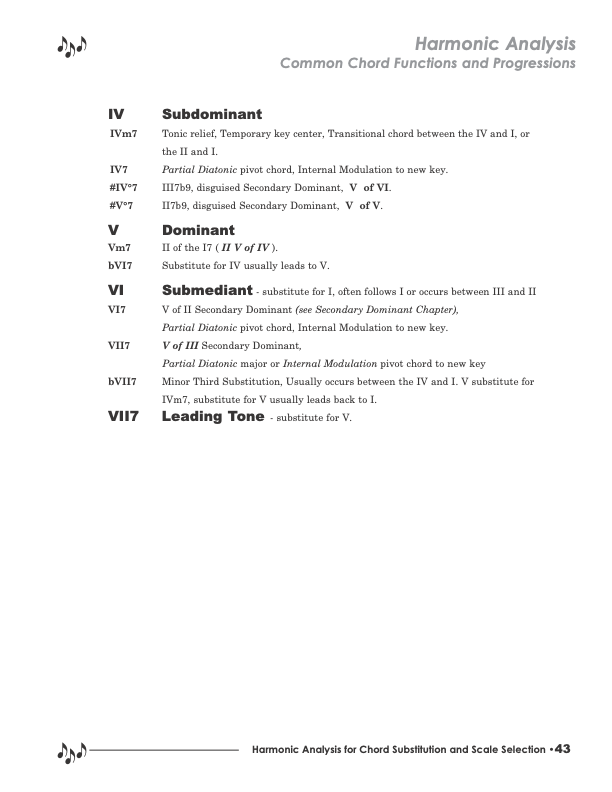
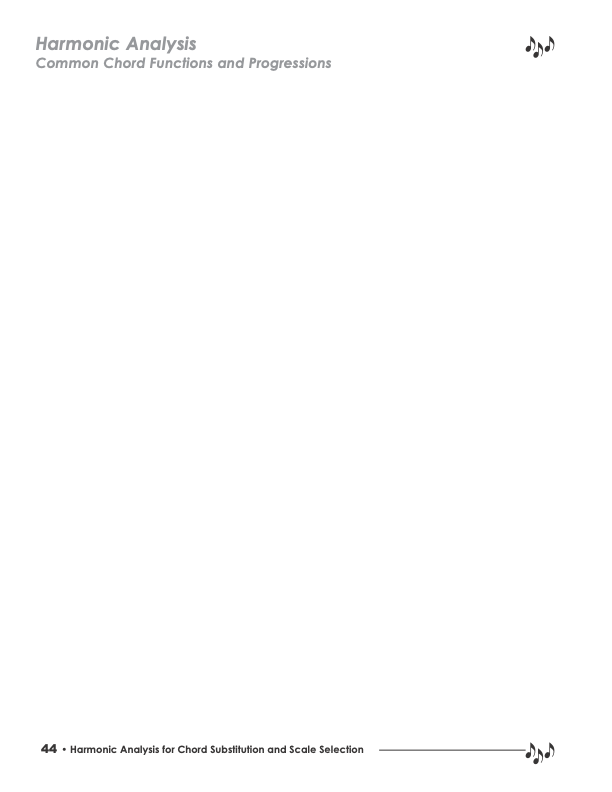
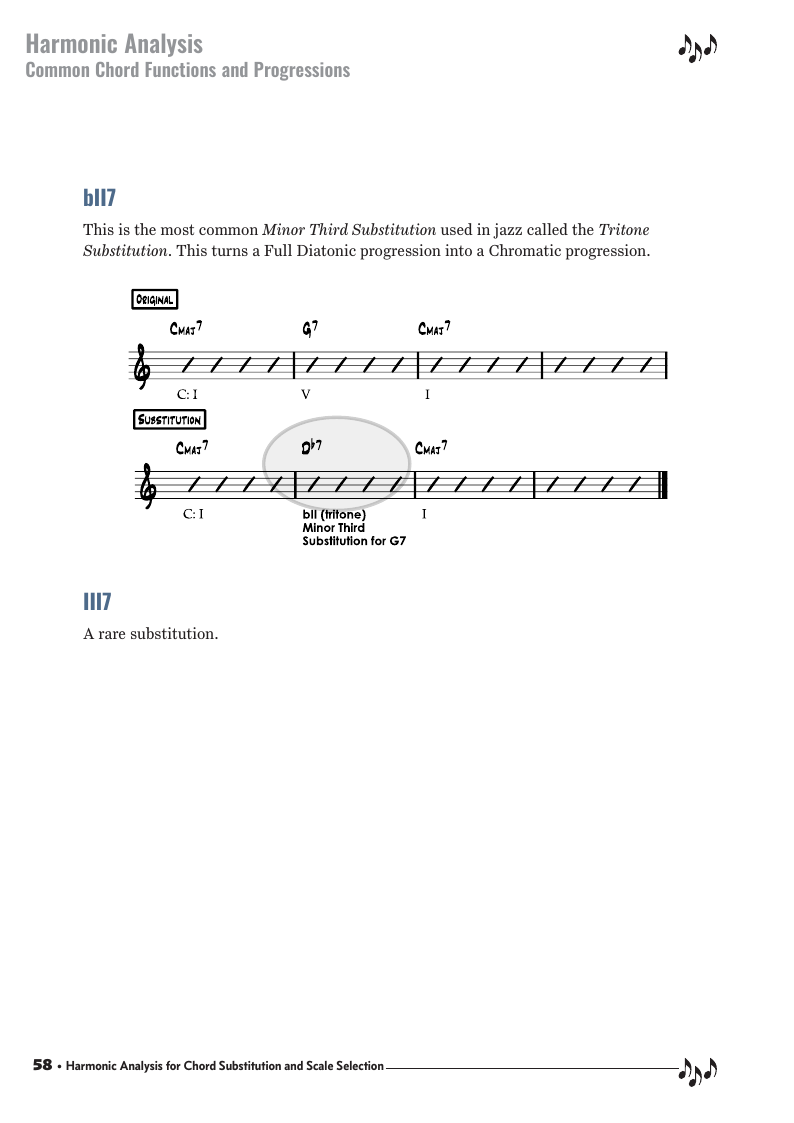





Common chord progression are simply the sequence of chords that contiounly show up in various styles of music and common keys.
Download the PDF lessons files for the complete lesson.
For a thorough listing of common chord progressions see my book The Advanced Guide to Chord Progressions - Vol I and II.
Volume I deals with chord progressions using the Full Diatonic, Partial Diatonic and Chromatic harmonic principles.
Volume II deals with Internal Modulation, Unresolved and Cycle principles.
Available for Premium Site Access Plans Only

This series, is the book Harmonic Analysis for Chord Substitution and Scale Selection by Curt sheller broken out into individual lessons with additional examples and content. Always, the latest version of the book.
Common Chord Functions and Progressions
Common Major Keys
Rock, Folk, Country, Pop, Bluegrass:
C, G, D, A, E
Jazz:
C, F, B, Eb, A, Db, G
NOTE: Their relative minor keys are also common.
The common keys actually corresponded to the dominant, popular instruments used during the particular style. Guitar for the Rock, Folk, Country keys and big band instruments, the horns for Jazz.
Common chord progression are simply the sequence of chords that contiounly show up in various styles of music and common keys.
Download the PDF lessons files for the complete lesson.
For a thorough listing of common chord progressions see my book The Advanced Guide to Chord Progressions - Vol I and II.
Volume I deals with chord progressions using the Full Diatonic, Partial Diatonic and Chromatic harmonic principles.
Volume II deals with Internal Modulation, Unresolved and Cycle principles.
Available for Premium Site Access Plans Only

This series, is the book Harmonic Analysis for Chord Substitution and Scale Selection by Curt sheller broken out into individual lessons with additional examples and content. Always, the latest version of the book.
Common Chord Functions and Progressions
Common Major Keys
Rock, Folk, Country, Pop, Bluegrass:
C, G, D, A, E
Jazz:
C, F, B, Eb, A, Db, G
NOTE: Their relative minor keys are also common.
The common keys actually corresponded to the dominant, popular instruments used during the particular style. Guitar for the Rock, Folk, Country keys and big band instruments, the horns for Jazz.
Harmonic Analysis - Common Chord Progressions
Common Chord Progressions
For a thorough listing of common chord progressions see my book The Advanced Guide to Chord Progressions — Vol I and II . Volume I deals with chord progressions using the Full Diatonic, Partial Diatonic and Chromatic harmonic principles. Volume II deals with Internal Modulation, Unresolved and Cycle principles.
Harmonic Functions of Chords
Individual chords can be categorized by their most common harmonic function. The following partial list is based on the Major Harmonized Chord Scale and shows a chord's most common harmonic function.
I
II
V
Tonic
Supertonic
Dominant
The Classic II V I
Approximately 75 to
80% of ALL Jazz
Chord Progressions
Tonic – is the first scale degree / chord of a Diatonic scale (the first note of a scale) and the tonal center or final resolution chord of Tonic/Dominant harmony.
A Partial Diatonic, V of IV Secondary Dominant chord to temporarily tonize the next chord. Also used as a pivot chord for an Internal Modulation to new key/tonal center.
A true Diminished linking chord typically used between the I and II .
Or ♭II°7 is not a true Diminished chord.
It's actually a Disguised V of VI Secondary Dominant chord, a VI7b9 .
A notational shortcut vs. using the correct slash chord notation. Example: C♯°7 vs. A7♭9/C♯ . This can often be a publisher's marketing decision based on the perceived ability and level of their customers. Or, I think they just don't have good music editors.
An Enharmonic Equivalent for the #dim7 above.
Minor Third Substitution , A tritone sub for V , Usually precedes the I , a common Chromatic harmonic move.
Supertonic – functions as the subdominant of I , replacement substitute for IV .
V of V, Secondary Dominant . A Secondary Dominant chords are a Partial Diatonic pivot chord and often used for an Internal Modulation to a new key.
An Enharmonic Equivalent for the ♭III°7 below.
Not a true Diminished chord. A VII7b9 , Disguised V of III Secondary Dominant . A notational shortcut vs. using the correct slash chord notation. Example: D♯°7 vs. B7♭9/D♯ .
Minor Third Substitution , A tritone sub for VI , Usually precedes the II , a common Chromatic harmonic move.
Mediant, replacement substitute for I .
V of VI Partial Diatonic, Secondary Dominant chord to temporarily tonize the next chord. Also used as a pivot chord for an Internal Modulation to new key/tonal center.
Subdominant
m7 or m6 – The II of the bVII7 below . A Minor Third Substitution substitution for a V chord. Or, a mis-named ninth chord a fourth up or fifth below.
Partial Diatonic chord found in a Blues progression.
Not a true Diminished chord. A II7b9 , Disguised V of VI Secondary Dominant . A notational shortcut vs. using the correct slash chord notation. Example: F♯°7 vs. E7♭9/G♯ .
An Enharmonic Equivalent for the #IVdim7 above.
Dominant
The II of the V of IV .
Not a true Diminished chord. A II7b9 , Disguised V of V Secondary Dominant . A notational shortcut vs. using the correct slash chord notation. Example: G♯°7 vs. D7♭9/C♯ .
Substitute for IV usually leads to V .
Submediant – substitute for I , often follows I or occurs between III and II .
A Minor Third Substitution substitution. A sub for V leading back to a I . Typically used as IVm7 bVII7 to the I — coming back to the tonic using the backdoor and not via the dominant, front door, V .
Leading Tone – substitute for V , often follows I or occurs between III and II .
Related Lessons, Videos, Lesson Series, Songs, Books & Reference Charts, Resources & Assets, Workshops are below.
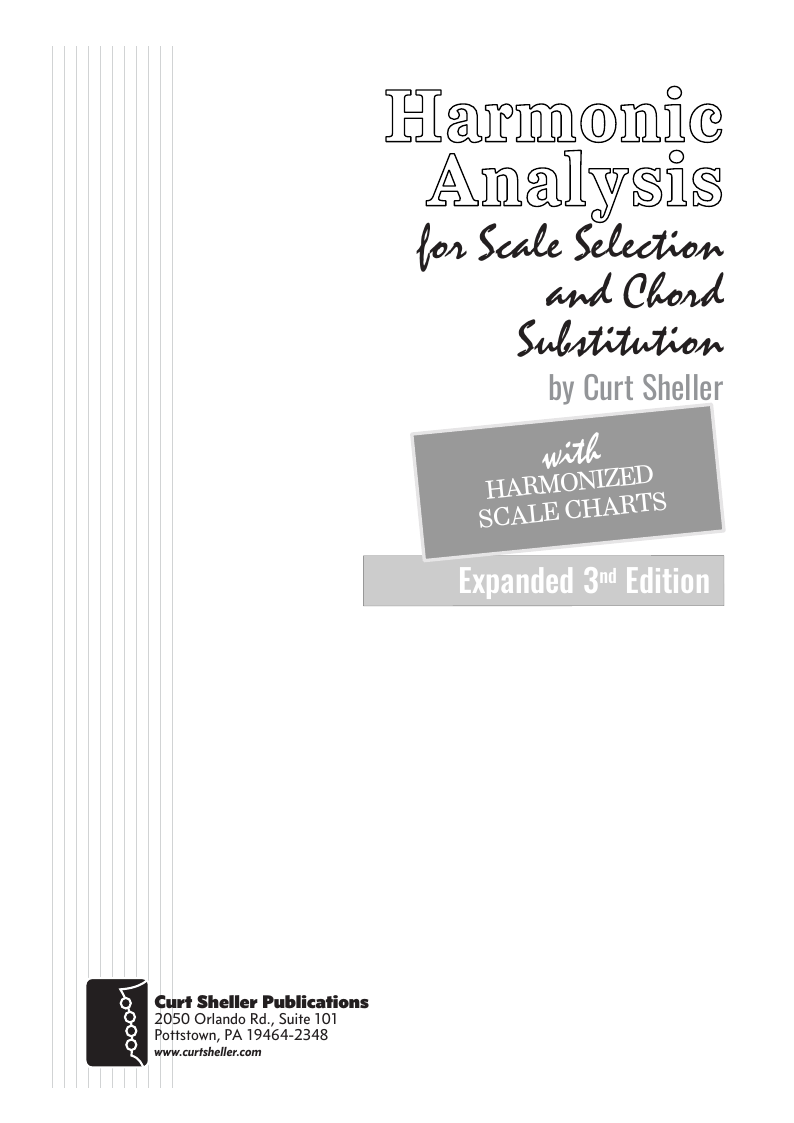
Harmonic Analysis ( HA ) is the process used to determine the harmonic function of chords within a chord progression. A chord progression is defined as a sequence of chords, each chord has a root and has a particular chord type. The relationship of a chord's root to a scale determines its function within that scale's tonality. Once a chord's function is identified, scale selections along with chord and scale substitutions can be made. This process is called Root Movement Analysis ( RMA ). This series of lessons are extracted from my book for use with individual private and on-line students. Each lesson directly corresponds the chapters in my book Harmonic Analysis for Scale Selection and Chord Substitution by Curt Sheller (me).

Harmonic Analysis is the understanding of the functional sequence of chords. It is the process used to analyze the harmonic structure of a progression, song or composition. This analysis is then used to make scale selections for improvisation and chord substitution.


return in your investment)—it is this— learning the
f*ckingnotes of your OWN instrument. Sorry for the tough talks—but it is sooooo true!


Learn to read single note melodies in the first/open position is a lot easier than you might think. Book: Ukulele – Reading Music Series – Primer

An organized collection of daily practice and reference material for the contemporary ukulele player for developing the vocabulary and knowledge necessary for single note playing. Book: Daily Practice Material for the Contemporary Ukulele
Checkout the Books & Reference Charts for additional Handy, Dandy Reference Charts.

Ukulele Fingerboard Chart for C Tuning, Low or High G – G C E A

Ukulele Fingerboard Chart for G Tuning, Low or High A – D G B E

A handy reference chart of all 15 major and relative minor key signatures. US Letter 8.5 x 11 sized (ANSI-A) , A4



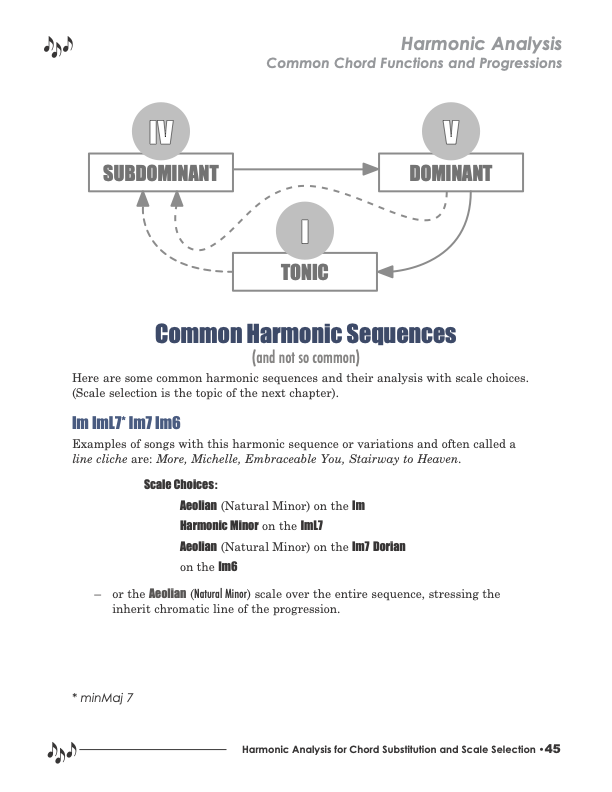
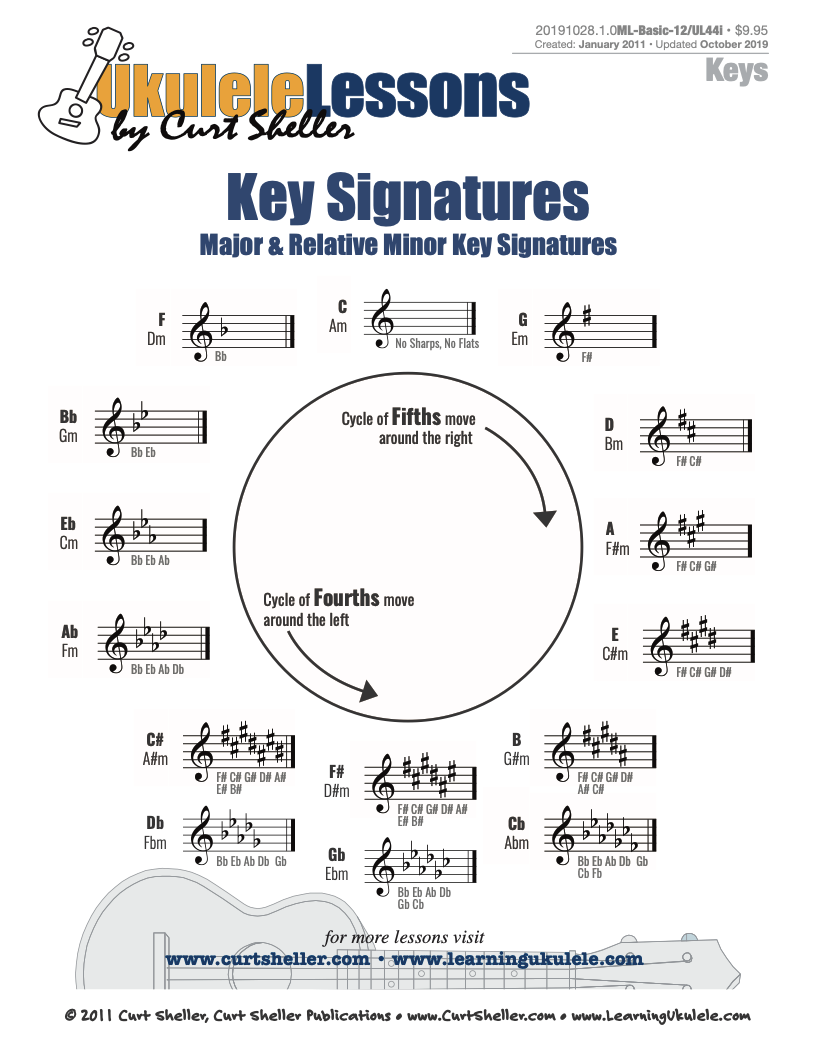

.jpg)